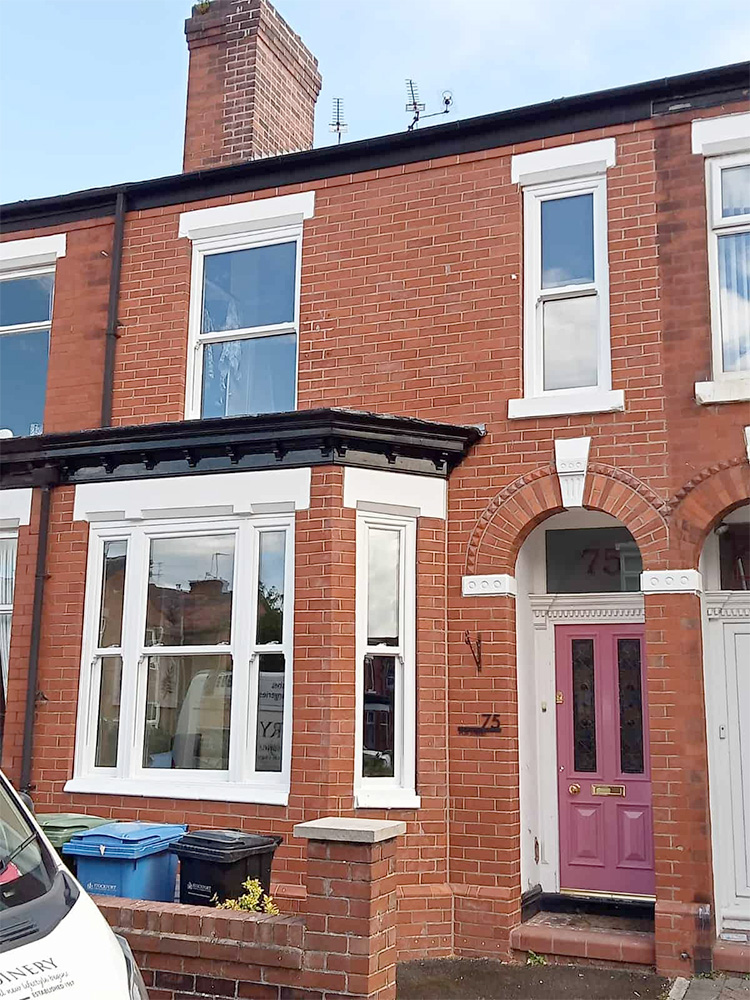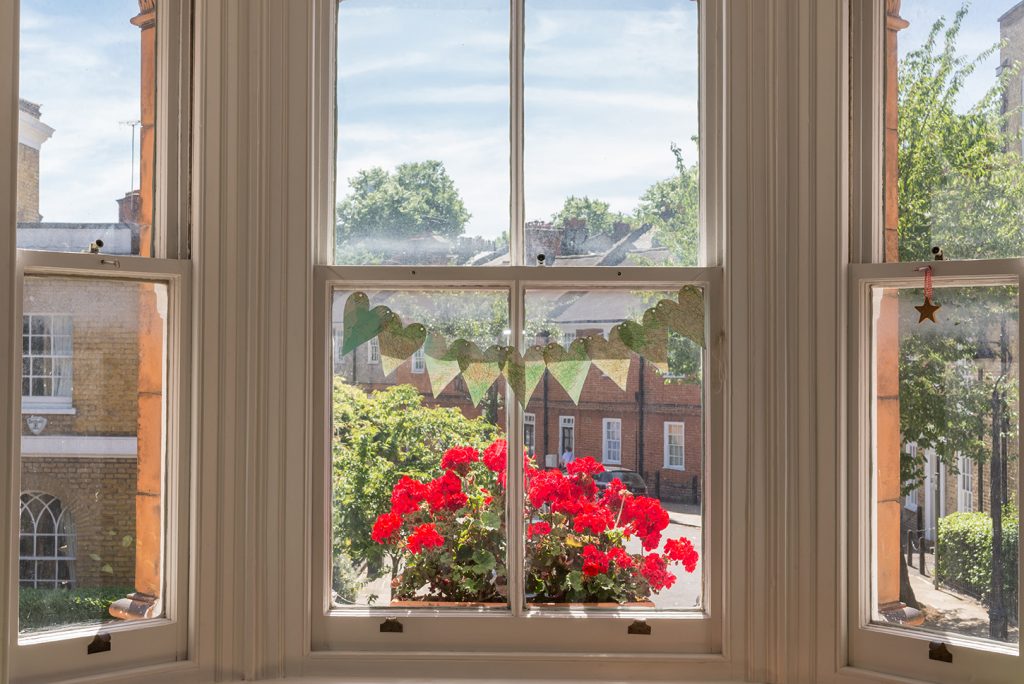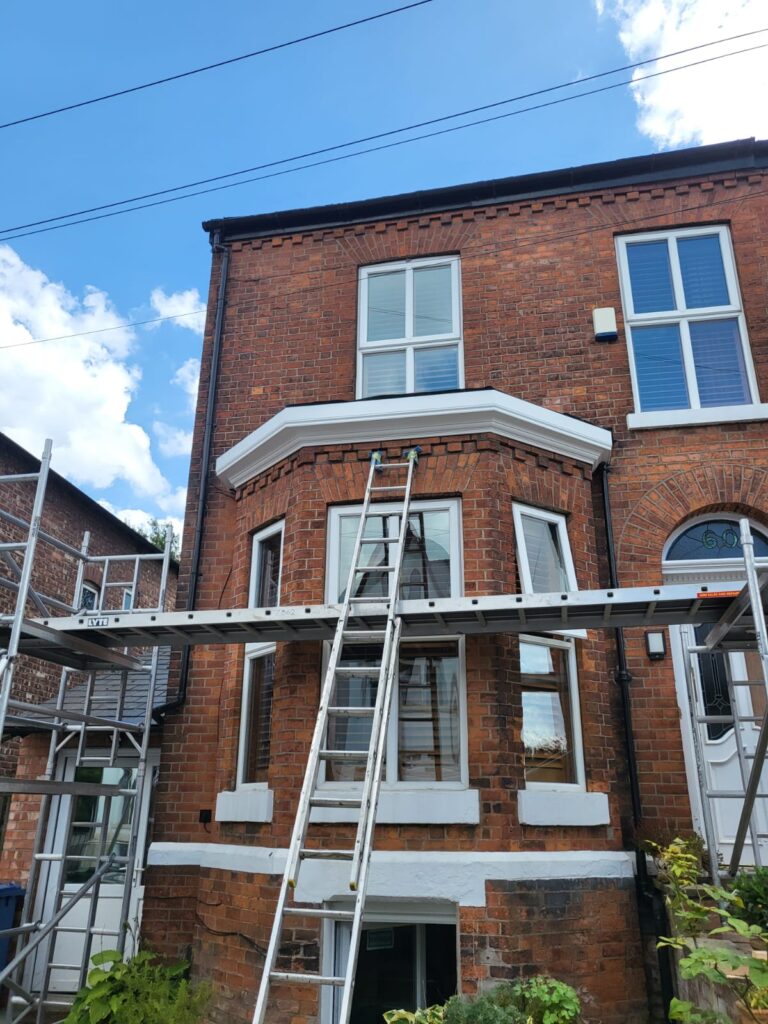Garden Gates Stockport: Specification, Security, and Weatherproofing for Contractors
At GB Joinery, we’ve spent over a decade perfecting the art of bespoke timber gate manufacture. During this time, we’ve...
Read MoreLast Updated: 27 October 2025
Working with timber in conservation areas presents unique challenges for building contractors. Balancing authentic period aesthetics with modern performance requirements demands careful consideration of materials, designs, and compliance standards.
This comprehensive guide explores how to successfully specify and install contemporary timber windows that satisfy conservation officers whilst delivering superior functionality.

Conservation areas are designated zones of special architectural or historic interest, where strict guidelines govern alterations to buildings. When it comes to windows, local authorities typically require:
Certain conservation areas may have specific requirements. It’s always a good idea to contact your local authority to understand any area-specific legislation.
When specifying timber windows for conservation area installations, key compliance considerations include:
You may also want to consider how any property upgrades remain in keeping with the area’s historical character.

Today’s engineered timber products, like Accoya, offer an excellent balance of traditional aesthetics and contemporary performance. These advanced materials provide:
At GB Joinery, we use Accoya wood to create high performing premium timber windows, doors and other products. We have seen first-hand the superior nature of Accoya and highly recommend it as the perfect timber choice for UK homeowners.
When working in a conservation area, you want to ensure that the products you offer your customers are accepted for installations in the heritage home. In recent years, Accoya has gained widespread acceptance among conservation officers due to many factors including:
When specifying timber windows for conservation areas, consider these important factors:
Planning officials often require specific information with which they can assess the suitability of any conservation area projects. To improve chances of approval, ensure applications include:
If you include this information, you’re far more likely to be granted the required permission.
In some cases, the local authority may challenge your application. In this instance, you should be prepared to address:
Proper installation is an important part of achieving conservation compliance. When working on a building located in a conservation area, you should aim to focus on:

For builders and installers, it’s always best to work closely with your customer to build your reputation. Once any installation is complete, you should provide clients with comprehensive guidance on:
As you have seen, successfully delivering window projects in timber conservation areas requires careful attention to detail and thorough understanding of local requirements. By specifying modern materials like Accoya and following proper installation practices, contractors can achieve the perfect balance of heritage aesthetics and contemporary performance.
For expert guidance on conservation-compliant timber windows, contact GB Joinery to discuss your specific project requirements. You can call us on 0161 477 1818 or send us a message online and we’ll get back to you as soon as possible.
You can check if your property is in a conservation area by visiting your local council’s website or contacting them directly. They usually provide maps and lists of conservation areas.
Owners of properties in conservation areas have a legal obligation to maintain the character of the area. This includes obtaining permission for certain types of work that may affect the appearance of the building or land, particularly due to special protection measures in place.
When an area is designated a conservation area, it is recognized for its special architectural or historic interest. This designation helps to protect and preserve the area’s character and appearance.
Conservation area appraisals and management plans are created to assess the significance of an area and to provide guidelines for its management, taking into account the character and appearance of the conservation area. They help ensure that any changes made are in line with the conservation objectives.
Conservation area rules apply to the overall character of an area, while listed building regulations specifically protect individual buildings of historical or architectural significance, including any dwelling house within the area. Both require permissions for alterations, but listed buildings have stricter controls.
Official guidance on conservation area compliance can typically be found on the website of your local planning authority or through government resources related to heritage and conservation.
In conservation areas, specific types of planning permission are often required to ensure that any changes preserve the character and appearance of the area. This typically includes obtaining full planning permission for major alterations or new constructions.
For external changes such as windows or extensions in a conservation area, you will likely need to apply for planning permission. It is essential to check local regulations, as some minor works may be exempt, but significant alterations generally require approval.
At GB Joinery, we’ve spent over a decade perfecting the art of bespoke timber gate manufacture. During this time, we’ve...
Read MoreWhen specifying timber windows for commercial and residential projects, contractors need concrete data on material performance, not marketing promises. Timber...
Read MoreWhen you’re working on a construction project, the temptation to cut costs through cheaper timber specifications is ever-present. However, cheap...
Read MoreFor building contractors and property developers, understanding the long-term costs of painting timber windows and the various parts of the...
Read More